Police officers rely on various high-performance vehicles to ensure they can effectively respond to various situations appropriately and on time. These police vehicles are designed to provide officers with an effective means of patrolling city streets, transporting suspects, storing equipment and weaponry, responding to riots and hostage situations, and more.
In addition, the vehicles provide varying levels of protection depending on their intended purpose. Following is a list of vehicles used by police officers and other law enforcement personnel.
List of Police Vehicles
Here are some common types of vehicles used by police officers in the United States (in alphabetical order). Please post a comment below to suggest additional police vehicles for the list.
Armored vehicles
Predominantly used by SWAT teams, armored vehicles are deployed in special situations. In the case of crowd or riot control, armored vehicles help police officers gain safe entry into areas that they would be unable to access otherwise. Armored cars, trucks, and tanks can also be used during hostage scenarios or when terrorist shooters hijack public spaces.
Armored vehicles keep passengers safe from external onslaught and armed fire. They work as effective shields and carriers so officers can get up close to the action, making it easier to gain control of the situation.
ATVs (All-Terrain Vehicles)
ATVs are used for patrolling off-road or rugged terrains, such as parks, beaches, or wilderness areas, where traditional vehicles can’t access easily.
Bikes or Bicycles
Some departments use bikes to allow officers to patrol crowded city areas. The bikes usually don’t carry much equipment, but some have small equipment pouches, including various accessories that the rider may need during their shift. Items could include a first aid kit, water bottles, flashlights, cell phones, tablet computers, and other items. The use of bikes also increases officer visibility in the community.
Boats
Police boats are used for patrolling water bodies like rivers, lakes, and coastal areas. They are equipped with features necessary for water-based law enforcement activities.
Command Post Vehicles
They are dispatched to any situation as a centralized meeting area, radio command centers, and other purposes. These are often custom-built for individual department needs but include features and equipment such as satellite TV, WiFi hubs and hotspots, portable scene lighting, communications equipment, electricity generators, storage, workstations for detectives and analysts, and much more.
Drones
Although they are not technically vehicles, Drones are quickly becoming a popular method of tracking down criminals and conducting surveillance. If you’re interested in the latest technology in the field, learn about Police Drones and the latest aerial surveillance and photography technology used in Law Enforcement and Investigations.
Helicopters
Police helicopters are used for aerial surveillance, pursuits, search and rescue missions, and other operations requiring a bird’s-eye view. They often have advanced technology and specialized equipment.
Horses
Police officers who work in city parks and recreation areas may ride horses to patrol certain areas. Units that use horses are referred to as “mounted” units. The horses allow officers to move around quickly and give them an above-the-crowd view of what’s going on. This helps them spot criminal activity, crowd control issues, and citizens needing help.
Motorcycles
Police officers use motorcycles for several reasons. Motorcycles are used for traffic enforcement, such as in the hit television series CHIPS. They are great for rapid acceleration, which allows officers to go from a dead stop to over 60 miles an hour in about five seconds. They are also good for maneuvering through traffic jams or crowded areas where a car or van won’t fit.
“Motors”, as they are often referred to are also used to escort government officials and sometimes even celebrities through crowded streets. They are also used during parades, funerals, and other special events. Most forces use motorcycle models developed by BMW, Harley-Davidson, and Kawasaki.
Police Cruiser
Police cruisers, also known as police pursuit vehicles, patrol cars, and sometimes squad cards, are easily the most popular type of police vehicle. These cars are specially adapted to suit diverse requirements. Reliable and well-equipped, these vehicles are enhanced with special services like state-of-the-art safety features, impressive cargo space, and interior space.
Cruiser or pursuit cars are built to reach high speeds in record time to help chase and apprehend fleeing suspects. Several car companies modify and improve certain models to meet the requirements and rigors of police work.
The more common models used as squad cars are the Ford Taurus, Ford Crown Victoria Interceptor, Chevy Caprice, and Dodge Charger. These cars are remodeled and equipped with enhanced performance alternators, quality suspension, increased battery power, high-power, performance engines, innovative braking systems, advanced accents, and features like sirens and light bars.
Sport Utility Vehicle (SUV)
Police officers make the most of the benefits unique to SUVs. These vehicles are generally used in rough weather and terrain and help combat hazardous conditions like heavy snowfall and ice. SUVs work well when duty calls for officers to get off the pavement when in pursuit. Additional carrying capacity and room in SUVs also come in handy in certain situations.
Mid to full-size SUVs are often preferred as police vehicles and make excellent patrol cars with their ability to blend into traffic. Models used for police work include Ford Excursion, Ford Expedition, and Ford Explorer.
Vans and Paddy Wagons
Mainly used for utilitarian purposes, vans transport groups of officers or prisoners. Models from minivans to full-scale tactical operation units are generally employed. In addition, vans are used as surveillance vehicles and fitted with listening devices, cameras, audio and visual recording equipment.
Trucks
Mostly used by the county or rural police, pickup trucks are operated by officers in areas where most of the population also drives trucks. This helps officers keep a low profile and work well in case of excessive snowfall and extreme weather conditions. Ford Raptor is a common model of truck used by law enforcement officials.
Special Vehicle Features
There are a number of new and innovative features becoming available for law enforcement cars. Following are some examples of the most interesting features:
- Blackout mode – Allows the vehicle’s interior lights to go completely dark at speeds below 15 miles an hour. This allows drivers to remain completely unnoticed when performing surveillance, following a suspect, or arriving on the scene.
- Surveillance Mode – If something comes within a certain distance of the car’s rear, the officer is alerted, the windows roll up automatically, and the doors lock. This helps protect drivers from an ambush, which is becoming more common in today’s society.
- Secure Park – This feature locks the trunk and the gun rack and prevents them from being opened.
- Automated License Plate Recognition (ALPR) – This feature provides the ability to automatically search plates for stolen or suspect vehicles is priceless. This allows the driver to keep his hands on the wheel while running plates.
Questions and Comments
If you have any questions about this list of vehicles used by police officers, please leave a comment below. See also: List of Equipment Police Officers use in the line of duty.



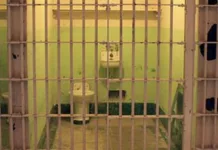
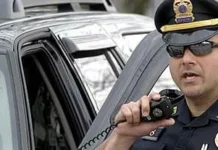
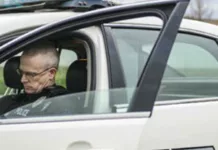
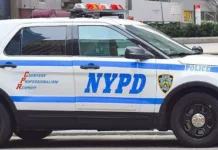
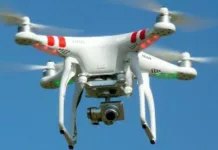
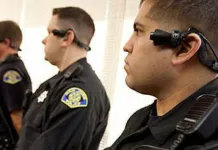
“Blackout mode – Allows the vehicles interior lights to go completely dark at speeds below 15 miles an hour. This allows drivers to remain completely unnoticed when performing surveillance, when following a suspect or arriving on scene.”
Can you please elaborate on this? Which vehicles/manufacturers are providing this option?
There are several companies that provide blackout mode solutions for police cruisers. For example, one solution is the InterMotive Police Interface Module (PIM) for Dodge Durango Pursuit vehicles. One of its optional features is blackout mode, which deactivates all of the external and internal lights for covert operations including headlights, taillights, and brake lights.